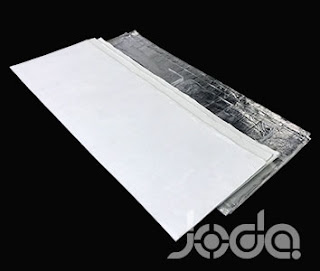New Progress In Research Field Of Carbon Aerogel
Aerogel Insulation Blanket was known as the new material changing the world, which has a very wide range of applications in the aerospace, defense and other high-tech fields, and construction, industrial pipe insulation and other civilian areas. From the structural point of view, aerogel is an ultra-light porous nano-material assembled by three-dimensional of a zero-dimensional quantum dots, one-dimensional nanowires or two-dimensional nanosheets and other low-dimensional nano-structure. The various variables of low-dimensional nanostructures, such as geometry, size, density, surface morphology, chemical properties and other parameters, will have an important impact on the final obtained aerogel properties. So far, a variety of low-dimensional nanostructure have been assembled into different aerogel, but the size of these nanostructure units is below 100 nanometers, or even just a few nanometers. The challenge for the preparation of aerogel with structural units greater than 100 nanometers (ie, submicron) is enormous, mainly due to two reasons: First, the larger the size of the aerogel, the smaller the specific surface area (the two are inversely proportional). For submicron structural units, the specific surface area of the obtained aerogels is very small, whether it is inorganic (higher density) or organic matter (low density), thus losing the excellent specific surface area of the aerogel feature; Second, regardless of the connection between the nanoscale structural units is a physical or chemical bonding, when the structural unit size becomes larger, the connection of the atoms in the proportion of the total number of atoms will be significantly reduced, and then assembled aerogel with the structural unit size becomes larger and drastically brittle.
In response to these challenges, the Institute of Nanotechnology and Nano Biology Institute of Chinese Academy of Sciences researcher Zhang Xue Tong led the aerogel team cooperate with the Professor Song Wenhui from University College London of British and Professor Yan Lifeng from University of Science and Technology of China, they use the average diameter of 220 nm conductive polymer Polyaniline polypyrrole copolymer) hollow sphere as precursors, use graphene oxide as crosslinking agent, through the key steps (Fig. 1) by sol-gel process, supercritical fluid extraction process and high-temperature heat treatment process, successfully obtained a new type of total carbon aerogel, as the graphene crosslinked carbon hollow ball aerogels (Figure 2). The presence of the cross-linker graphene, makeing the point-to-point contact between the ball and the ball into a point-to-face contact, thus improving the mechanical properties of the final aerogel; the use of the hollow sphere structure, as well as submicron hollow spherical shell and the final aerogel have a large specific surface area. The choice of the conductive polymer in the precursor makes the final all-carbon aerogel achieve the doping of nitrogen.
The obtained graphene cross-linked carbon hollow ball aerogel has low density (51-67mg / cm3), high conductivity (263-695S / m), high specific surface area (569-609m2 / g), high-yang (1.8MPa) and so on. It is expected to be widely used in energy (capture, storage, conversion), sensing, catalysis, adsorption, separation, functional composites and so on. For example, the graphene cross-linked carbon hollow ball aerogel is used as an electrode building insulation materials in a U-type thermoelectric chemistry cell with an output power of 1.05 W • m-2 (6.4 W • Kg-1) and cyclic energy conversion efficiency up to 1.4%, these values are much higher than the current value of the same type of device.
Fig. 1 Graphene cross-linked carbon hollow ball aerogel process route diagram
Fig. 2 Graphene cross-linked carbon hollow ball aerogel: (a) Aerogel on petal; (b) Scanning electron micrograph of Aerogel (c) Transmission electron microscopy photograph of Aerogel
(d) Nitrogen adsorption and desorption curve of Aerogel
source: http://www.aerogelinsulationblanket.com/aerogel-insulation-blanket/





评论
发表评论